Related Research Articles
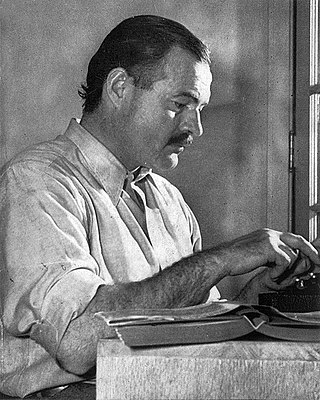
Ernest Miller Hemingway was an American novelist, short-story writer and journalist. Known for an economical, understated style that influenced later 20th-century writers, he has been romanticized for his adventurous lifestyle and outspoken, blunt public image. Some of his seven novels, six short-story collections and two non-fiction works have become classics of American literature, and he was awarded the 1954 Nobel Prize in Literature.
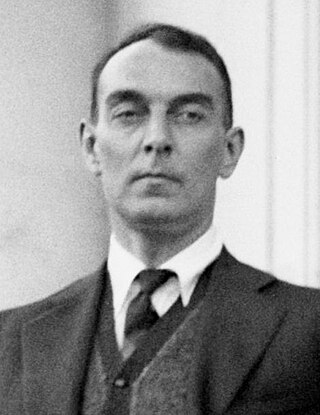
Ringgold Wilmer Lardner was an American sports columnist and short story writer best known for his satirical writings on sports, marriage, and the theatre. His contemporaries—Ernest Hemingway, Virginia Woolf, and F. Scott Fitzgerald—all professed strong admiration for his writing, and author John O'Hara directly attributed his understanding of dialogue to him.

Ford Madox Ford was an English novelist, poet, critic and editor whose journals The English Review and The Transatlantic Review were important in the development of early 20th-century English and American literature.
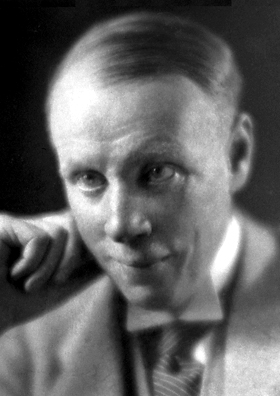
Harry Sinclair Lewis was an American novelist, short-story writer, and playwright. In 1930, he became the first author from the United States to receive the Nobel Prize in Literature, which was awarded "for his vigorous and graphic art of description and his ability to create, with wit and humor, new types of characters." Lewis wrote six popular novels: Main Street (1920), Babbitt (1922), Arrowsmith (1925), Elmer Gantry (1927), Dodsworth (1929), and It Can't Happen Here (1935).
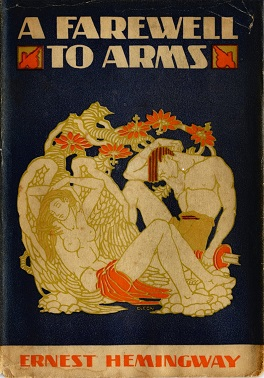
A Farewell to Arms is a novel by American writer Ernest Hemingway, set during the Italian campaign of World War I. First published in 1929, it is a first-person account of an American, Frederic Henry, serving as a lieutenant in the ambulance corps of the Italian Army. The novel describes a love affair between the American expatriate and an English nurse, Catherine Barkley.

The Hogarth Press is a book publishing imprint of Penguin Random House that was founded as an independent company in 1917 by British authors Leonard Woolf and Virginia Woolf. It was named after their house in Richmond, in which they began hand-printing books as a hobby during the interwar period.

A hardcover, hard cover, or hardback book is one bound with rigid protective covers. It has a flexible, sewn spine which allows the book to lie flat on a surface when opened. Modern hardcovers may have the pages glued onto the spine in much the same way as paperbacks. Following the ISBN sequence numbers, books of this type may be identified by the abbreviation Hbk.

William Ralph Inge was an English author, Anglican priest, professor of divinity at Cambridge, and dean of St Paul's Cathedral. Although as an author he used W. R. Inge, and he was personally known as Ralph, he was widely known by his title as Dean Inge. He was nominated for the Nobel Prize in Literature three times.
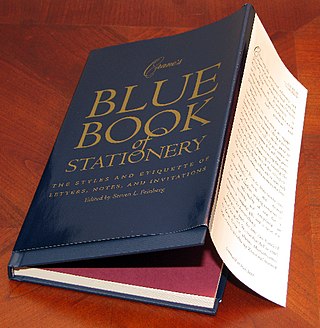
The dust jacket of a book is the detachable outer cover, usually made of paper and printed with text and illustrations. This outer cover has folded flaps that hold it to the front and back book covers; these flaps may also double as bookmarks.
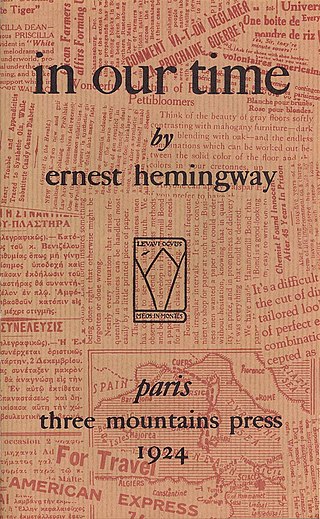
In Our Time is the title of Ernest Hemingway's first collection of short stories, published in 1925 by Boni & Liveright, New York, and of a collection of vignettes published in 1924 in France titled in our time. Its title is derived from the English Book of Common Prayer, "Give peace in our time, O Lord".
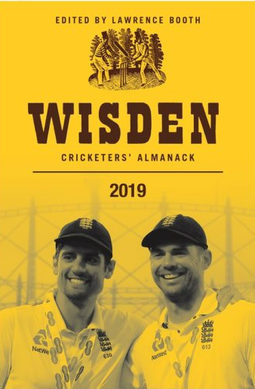
Wisden Cricketers' Almanack, or simply Wisden, colloquially the Bible of Cricket, is a cricket reference book published annually in the United Kingdom. The description "Bible of cricket" has been applied to Wisden since the early 1900s.

Men Without Women (1927) is the second collection of short stories written by American author Ernest Hemingway. The volume consists of 14 stories, 10 of which had been previously published in magazines. It was published in October 1927, with a first print-run of approximately 7,600 copies at $2.
The Black Sun Press was an English-language press noted for publishing the early works of many modernist writers including Hart Crane, D. H. Lawrence, Archibald MacLeish, Ernest Hemingway, and Eugene Jolas. It enjoyed the greatest longevity among the several expatriate presses founded in Paris during the 1920s, publishing nearly three times as many titles as did Edward Titus under his Black Manikin Press. American expatriates living in Paris, Harry Crosby and his wife Caresse Crosby founded the press to publish their own work in April 1927 as Éditions Narcisse. They added to that in 1928 when they printed a limited edition of 300 numbered copies of "The Fall of the House of Usher" by Edgar Allan Poe. They enjoyed the reception their initial work received, and decided to expand the press to serve other authors, renaming the company the Black Sun Press, following on Harry's obsession on the symbolism of the sun.
The Little Review was an American avant-garde literary magazine founded by Margaret Anderson in Chicago's historic Fine Arts Building, published literary and art work from 1914 to May 1929. With the help of Jane Heap and Ezra Pound, Anderson created a magazine that featured a wide variety of transatlantic modernists and cultivated many early examples of experimental writing and art. Many contributors were American, British, Irish, and French. In addition to publishing a variety of international literature, The Little Review printed early examples of surrealist artwork and Dadaism. The magazine's most well known work was the serialization of James Joyce's Ulysses.

Book design is the art of incorporating the content, style, format, design, and sequence of the various components and elements of a book into a coherent unit. In the words of renowned typographer Jan Tschichold (1902–1974), book design, "though largely forgotten today, [relies upon] methods and rules upon which it is impossible to improve, [and which] have been developed over centuries. To produce perfect books, these rules have to be brought back to life and applied". Richard Hendel describes book design as "an arcane subject", and refers to the need for a context to understand what that means.

Scribner's Magazine was an American periodical published by the publishing house of Charles Scribner's Sons from January 1887 to May 1939. Scribner's Magazine was the second magazine out of the Scribner's firm, after the publication of Scribner's Monthly. Charles Scribner's Sons spent over $500,000 setting up the magazine, to compete with the already successful Harper's Monthly and The Atlantic Monthly. Scribner's Magazine was launched in 1887, and was the first of any magazine to introduce color illustrations. The magazine ceased publication in 1939.

Ernest Hemingway (1899–1961) was an American novelist, short-story writer, journalist, and sportsman. His economical and understated style—which he termed the iceberg theory—had a strong influence on 20th-century fiction. Many of his works are considered classics of American literature.

Bookbinding is the process of building a book, usually in codex format, from an ordered stack of paper sheets with one's hands and tools, or in modern publishing, by a series of automated processes. Firstly, one binds the sheets of papers along an edge with a thick needle and strong thread. One can also use loose-leaf rings, binding posts, twin-loop spine coils, plastic spiral coils, and plastic spine combs, but they last for a shorter time. Next, one encloses the bound stack of paper in a cover. Finally, one places an attractive cover onto the boards, and features the publisher's information and artistic decorations.

"Cross Country Snow" is a short story written by Ernest Hemingway. The story was first published in 1924 in Ford Madox Ford's literary magazine Transatlantic Review in Paris and republished by Boni & Liveright in Hemingway's first American volume of short stories In Our Time in 1925. The story features Hemingway's recurrent autobiographical character Nick Adams and explores the regenerative powers of nature and the joy of skiing.
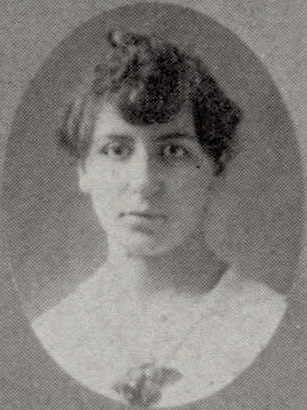
Cleo Theodora Damianakes, nom de plume Cleon or Cleonike, was an American etcher, painter, and illustrator. She was widely known for designing dust jackets for Lost Generation writers in the 1920s and early 1930s, including cover art for the first editions of Ernest Hemingway's The Sun Also Rises and A Farewell to Arms, as well as F. Scott Fitzgerald's All the Sad Young Men, which were published by Scribners. Other authors she designed covers for included novelists such as Zelda Fitzgerald, Conrad Aiken, John Galsworthy, and Arthur B. Reeve.
References
- ↑ "Letters Ernest Hemingway Volume 1 :: American literature :: Cambridge University Press". Cambridge.org. 2011-07-05. Retrieved 2013-10-26.
- ↑ "An Interview with the General Editor of The Letters of Ernest Hemingway | fifteeneightyfour". Cambridgeblog.org. Retrieved 2013-10-26.
- ↑ Howard, Jennifer (2011-10-10). "Hemingway's Newly Released Letters Cast Author in New Light - Research - The Chronicle of Higher Education". Chronicle.com. Retrieved 2013-10-26.
- ↑ "The Letters of Ernest Hemingway - Volume 6 - 1934–1936". Cambridge University Press. Archived from the original on 17 February 2024. Retrieved 17 February 2024.